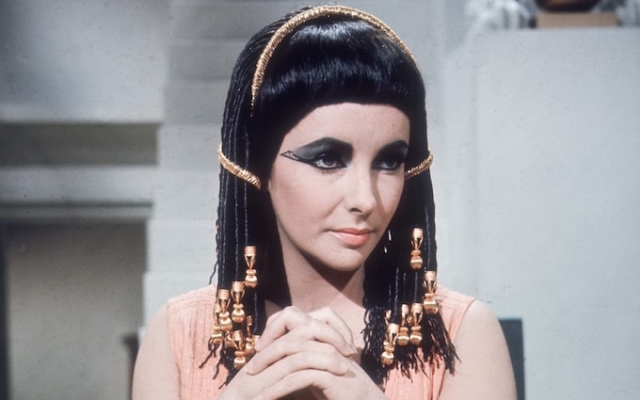 Modern reference: Elizabeth Taylor as Cleopatra in Joseph L. Mankiewicz's 1963 film. Photo: Getty
Modern reference: Elizabeth Taylor as Cleopatra in Joseph L. Mankiewicz's 1963 film. Photo: Getty
Cleopatra was making waves. More than 2,000 years after her death, the face that sank the Roman Republic is once again causing diplomatic uproar.
Last month, the Egyptian Ministry of Antiquities launched an attack on Netflix over the streamer's new series Queen Cleopatra. Their contention was not that the documentary filmed by Jada Pinkett Smith was a little silly—it certainly is—but that it was «a falsification of Egyptian history and a blatant historical misconception.»
Crime Netflix? The role of the notorious queen was chosen by a black actress, British soap opera star Adele James. So, with all the grit of Italians confronted with a plate of seafood linguine sprinkled with parmesan, Egyptian MPs immediately called for a total ban on Netflix. The casting, in their opinion, was «an attack on family values.» Otherwise, the history of Cleopatra, of course, is full of cozy everyday sermons.
Yet three years ago, Internet public opinion was determined for the opposite reason. That's when it was announced that Israeli actress Gal Gadot would play Cleopatra in the yet-to-be-released film directed by Patty Jenkins, who directed Gadot in Wonder Woman. Gadot vowed to «bring to the big screen the story of Cleopatra, Queen of Egypt, as never before seen… For the first time, tell her story through the eyes of women.»
Despite this laudable intention, some are outraged commentators accused the film's supporters of whitewashing one of the most famous women in history. The very criticism that the Netflix film is intended to address.
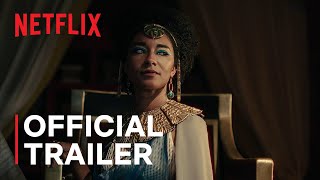
What did Cleopatra look like? Inconvenient for both Netflix and the Egyptian government, no one really knows. What we think we know about Cleopatra is largely the fantasy of a succession of male writers—Plutarch, Shakespeare, George Bernard Shaw—created over the millennia. The evidence we have about her appearance is flimsy at best.
“The actual facts that we have about Cleopatra, the modern evidence, are pretty scarce,” says Toby Wilkinson, professor of Egyptology and associate provost at Lincoln University.
“Most of what we have is other people's views of her, which were heavily colored by their particular political stance, and then by the whole web of myths that grew up around her, which are, of course, in some ways more powerful than those the few historical facts we have.» /p>
No contemporary descriptions of Cleopatra have survived, and none of those on which our traditional ideas of her are based are considered particularly objective. Cleopatra as we remember her today—an Egyptian queen of striking beauty, a great seductress of men, a tragic figure who killed herself with a snake—turns out to be more fiction than history.
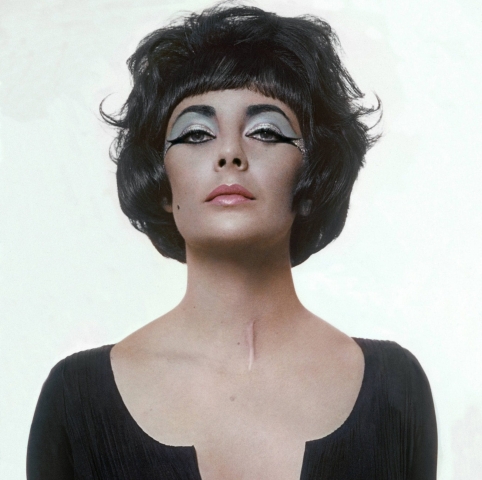 'Egyptian like Elizabeth Taylor': Taylor in 1963 Cleopatra. Posted By: Bert Stern/Conde Nast
'Egyptian like Elizabeth Taylor': Taylor in 1963 Cleopatra. Posted By: Bert Stern/Conde Nast
After all, she wasn't even a real Egyptian. The Ptolemies, the ruling dynasty to which she belonged, called themselves Egyptians on public monuments, hence the permanent image of Cleopatra in Egyptian dress (and the famous image of Elizabeth Taylor). But in fact, they were foreign invaders who strictly maintained the ethnic integrity of their line — up to frequent incestuous marriages. According to her latest biographer, Stacey Schiff, Cleopatra was «about the same Egyptian as Elizabeth Taylor» by nationality.
The Ptolemies were actually from Macedonia, a powerful state on the outskirts of what we now call ancient Greece. Alexander the Great, who invaded Egypt and overthrew the Persian rulers in 332 BC, was born here. In a power struggle after Alexander's death, one of his most powerful generals, Ptolemy, captured Alexandria and declared himself pharaoh. His descendants ruled there for the next three centuries — Cleopatra was the last in the family.
“At that time, there was no concept of what it meant to be Greek. The Ptolemies identified themselves very strongly with their Macedonian homeland,” says Wilkinson.
We know very little what the Macedonians looked like. “They probably wouldn't have looked like modern Greeks,” Wilkinson says. In other words, neither Gal Gadot nor Adele James are «correct» candidates for the role of Cleopatra, because no one has any idea what «correct» looks like. In this context, talking about «whitewash» — or its opposite — is meaningless.
The big problem for casting directors is the beauty of Gadot and James. Through the centuries, Cleopatra's reputation as an amazing beauty has been maintained, but her origins are questionable at best. The legend seems to have originated with the Roman historian Cassius Dio, who called her «a woman of consummate beauty». But Dion was born nearly two hundred years after Cleopatra's death, and his account of her appearance seems to have been motivated more by political considerations than by anything related to her actual appearance.
 The Queen in Wait: Gal Gadot in Wonder Woman 1984. Photo: Clay Enos. . The Roman Empire had its eyes set on a fantastically rich corner of Africa at its doorstep, and its father Ptolemy XII was forced to actually mortgage Egypt for the payments needed to keep the Romans at bay. When Cleopatra took the throne at the age of 21, the need to fight off the Romans only intensified.
The Queen in Wait: Gal Gadot in Wonder Woman 1984. Photo: Clay Enos. . The Roman Empire had its eyes set on a fantastically rich corner of Africa at its doorstep, and its father Ptolemy XII was forced to actually mortgage Egypt for the payments needed to keep the Romans at bay. When Cleopatra took the throne at the age of 21, the need to fight off the Romans only intensified.
“What does a female ruler do in such a position? What cards does she have yet to play? asks Wilkinson, explaining the tactics of Cleopatra's famous romances with two different Roman rulers: first Julius Caesar, then Mark Antony. (Curiously, since she had children with both men, this unusual fact is one of the few parts of Cleopatra's personal history that we can be sure of.)
It was Cleopatra's relationship with Mark Antony that made early historical accounts of her life so susceptible to political motives. Cleopatra sided with Antony in the civil war between the three triumvirs who ruled the empire after Caesar, which led to their death, the defeat of Egypt by Rome and the ascension of Octavius Caesar to the throne in 27 BC
Roman historians Thus, those who wrote the first accounts of Cleopatra were writing from the other side of history.
“Their purpose was to downplay or exoticize Egypt in order to support Roman claims and the triumph of the Romans in conquering Egypt,” Wilkinson says. «You'll never get a fair account of Cleopatra.»
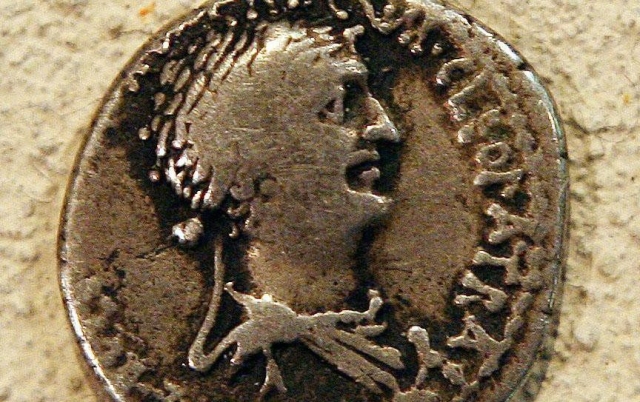 Not very flattering: a coin that clearly depicts Cleopatra. Photo: Owen Humphreys
Not very flattering: a coin that clearly depicts Cleopatra. Photo: Owen Humphreys
For example, Dio was fine with portraying her as a great beauty because it fit into his larger picture of Antonia as an enslaved seductive sexual seductress. The image both castrated Antony and presented him as a traitor, enslaved in Egypt rather than in Rome. Hence Dio's description of Cleopatra as scheming and sexually voracious.
But the closer we come to those who really saw Cleopatra, the more unconvincing the idea that she was a great beauty seems.
“All we need is a few statues, which inevitably idealise, and a coinage, which is probably more accurate, which shows her with a very pronounced aquiline nose and pointed chin. She doesn't look like we would consider beautiful in a 21st-century aesthetic,» Wilkinson says diplomatically.
The closest written description we have of Cleopatra's appearance to modern times comes from the Roman historian Plutarch, which it means: «Her beauty, we are told, was not in itself entirely incomparable, nor such as to amaze those who saw her.»
 Accurate? Who knows: Adele James as Cleopatra in Netflix's Queen Cleopatra. Photo: Netflix
Accurate? Who knows: Adele James as Cleopatra in Netflix's Queen Cleopatra. Photo: Netflix
“She was considered powerful, and of course that has its own appeal,” says Wilkinson.
“Why did Julius Caesar sail on the Nile with Cleopatra? Not necessarily because she was beautiful in the conventional sense, but because she had the keys to Egypt. That's what made her attractive.»
He continues: “The idea that you can make a movie about Cleopatra that is somehow 'accurate'… I mean, whose accuracy? Whose version of the truth do you adhere to? Wilkinson says.
This is a question both Netflix and the Egyptian government should ponder. Through the ages, Cleopatra has struggled with competing forces, her image shaped by agendas. So in some ways, the Netflix series is just the latest in a long line of mythmakers who polish the myth of Cleopatra — at the expense of the real ruler.
Can the real Cleopatra stand up, please? Poor woman, even she doesn't know who she is anymore.
Queen Cleopatra is now on Netflix





















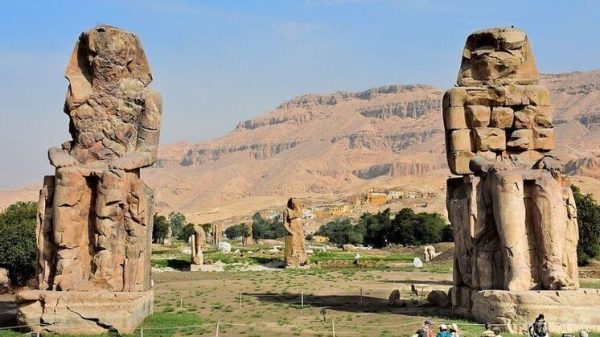
































Свежие комментарии